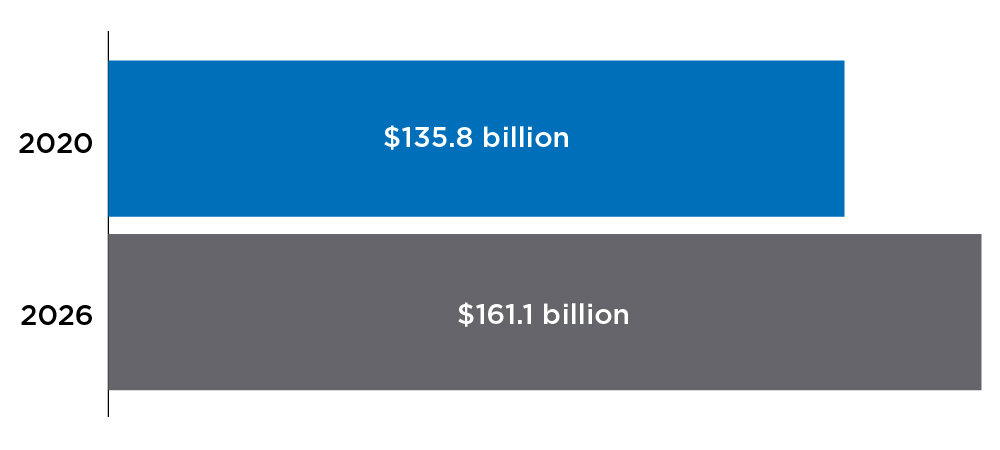From conscientious to customized, today’s chocolate and confectionery consumers demand products that deliver new tastes, exotic experiences and are socially responsible.
Increased awareness of cocoa production processes has rallied the market to strive for fair-trade raw materials and deliver transparency in ingredient origins and sourcing. Consumers are also demanding a focus on minimizing the environmental impact of chocolate confections and looking for sustainability in both production and packaging.
Healthier confectionery options, including organic, sugar-free and vegan choices, continue to be popular, as are dark chocolate and confections with nuts, seeds and fruit, which are often touted for their health benefits. Consumers also read labels closely and are on the lookout for unnecessary allergens.
The demand for chocolate gift packages has also increased in recent years, enabling connection and emotional comfort along with a growing trend for novel, customizable and specialty confectioneries.
As producers work to balance meeting rapidly changing consumer trends, new product introductions need to be faster and operations designed with more flexibility. To remain profitable, converting production from one product to another must be easy and quick.
Supply Chain Complexities
The supply chain for chocolate and confectionery ingredients is far-reaching, relying on suppliers from around the world. From West Africa to New Zealand, Ukraine to Southeast Asia, producers rely on global partners to keep confectionery production on track. However, these commodity markets are susceptible and have been impacted by their own challenges in recent years, from changes in weather patterns to a pandemic, political instability or even war.
For chocolate and confectionery producers, meeting increasing demand has been hampered as the pandemic, war and other issues have spurred backlogs as well as transportation and logistics complications. These challenges have resulted in increased volatility in supply and distribution for all industries — chocolate and confectionery included.
As suppliers await improved stability and reliability in the supply chain, now is the time to examine what internal process and operation strategies can be deployed to smooth the ride.
Controlling Challenges
There is little control over complex external factors, but chocolate and confectionery producers that look to identify internal areas of improvement may very well find the golden ticket to success.
Engineering management can prepare for the ongoing external market challenges by exploring the range of available internal improvements that can be made in an operating facility. A plan to evaluate and improve existing operational processes and functional areas can help buffer external impacts for chocolate and confectionery producers.
Looking at Labor
In a particularly tight labor market — when even increased wages can struggle to pull enough willing and qualified candidates into the labor pool — producers can seek relief in rethinking existing business models, in search of efficiency, reliability and residency. Chocolate and confectionery operations are no different.
The labor market is reason enough for chocolate and confectionery producers to examine the many possible improvements that can be achieved in an existing operation. However, to maximize the effectiveness of labor and increase the likelihood that labor is deployed in the right areas, it’s vital to know what staffing roles exist and how important these roles are in an operation. In many cases, there may be opportunities to streamline workflows and reduce labor needs. Taking advantage of such opportunities requires a better understanding of the dynamics of actual labor productivity. Key questions to consider include:
- What process areas are impacted by labor or skilled labor shortages?
- How can jobs be changed to be easier and less strenuous for staff?
- What deficiencies and waste are uncovered in value stream mapping? How are bottlenecks identified?
- What workflow and motion studies, and production station analytics, are needed?
- How can process simulation identify and quantify stations and operations suited for task automation?
Production Control
Managing tight profit margins in a volatile market depends on a good understanding and control of production. Monitoring and controlling operations — from receiving ingredients to retail or consumer delivery — depends on identifying the right monitoring points and control parameters needed to reduce loss and waste. However, developing the right system and associated processes includes assessing operations. Plant managers should ask these questions:
- How is plant overall equipment effectiveness (OEE) currently monitored, tracked and controlled?
- How is food safety risk mitigated? What critical control points are in place? What methods are used to track and control ingredient separation between lots?
- How is recipe information managed? What is used to monitor ingredient additions and process parameters?
- What is the conversion rate of ingredients to finished product? Are controls in place to reduce product giveaway?
Bulk Handling
As confectionery producers explore increasing efficiencies during supply chain turmoil, one area to evaluate is sourcing bulk ingredients. The procurement and storage of ingredients can improve product reliability and cost containment. However, determining how this strategy can be deployed with minimum risk and maximum return, producers should consider a range of variables, including:
- What bulk sizing options exist?
- What will be the sourcing strategy?
- What is the feasibility and budget impact of using railroad for delivery?
- How will bulk ingredients be stored? How will ingredients be conveyed to the operation?
- What climate control considerations are needed?
- How can working capital vs. inventory on hand be better balanced?
Warehouse Management
Inventory is working capital for producers and getting physical control of ingredients is a balance for chocolate and confectionery producers. Safety stock levels must be adjusted and managed to see that an operation stays up and running. With many warehouse solutions available, it’s important to undertake sound assessments upfront to help realize long-term gains, including:
- How are ingredients currently delivered, stored, processed and shipped?
- What is the current rate of spoilage in the process?
- How will ingredients be received, scanned and tracked?
- How will components be sorted, traced and used in the production line flow?
- What automation and controls are needed?
- Are warehouse expansions or new facilities required?
Distribution Centers
Confectionery producers can consider improving distribution center automation capabilities — including truck loading and unloading — to regain control, realize labor savings and limit risk exposure. Choosing the right approach is dependent upon product and production requirements and demands careful evaluation of several key factors, including:
- What distribution space capacity exists, how is it utilized and what are the cost center impacts?
- Is any current distribution area capable of handling new operational processes? What is needed to be compliant, high quality, safe and productive?
- How will the distribution center be integrated with other operations and facilities?
- What automation is needed to maximize return on capital and productivity?
- Will stormwater management infrastructure and environmental and local regulations have an impact on the distribution center site?
Sweet Future Prospects
Meeting increasing consumer demand within an uncertain market environment is challenging for any industry. Now is the time for chocolate and confectionery producers to comprehensively evaluate existing operations to develop the right strategies for long-term self-reliance, productivity and growth.




